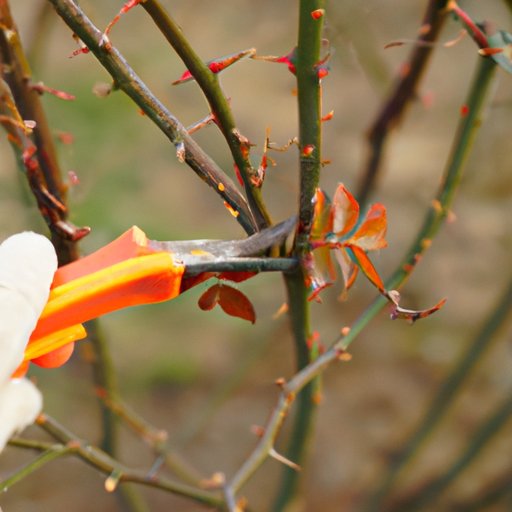
I. Introduction
Roses are known for their beauty, elegance, and fragrant scent. They have been adorning gardens for hundreds of years and have become a symbol of true love and passion. However, keeping roses alive and healthy requires a certain level of care and attention. In this article, we will explore different methods and tips to make your roses thrive.
II. Choose the right location for your roses
One of the most important factors for growing healthy roses is selecting the right location. Roses need a good amount of sunlight and well-drained soil with a pH range of 6.0-6.5. Here are some tips to choose the right location:
- Make sure the area gets at least six hours of direct sunlight daily.
- Avoid planting in low or wet areas.
- Choose a spot with good air circulation to prevent fungi from growing.
- Test the soil for pH levels and add necessary nutrients or soil amendments accordingly.
III. Watering correctly
Watering is crucial for roses to grow and produce vibrant blooms. Here are some tips on how to water roses correctly:
- Water roses once or twice a week, depending on the soil type and weather conditions.
- Water deeply at the base of the plant, avoiding wetting the leaves, which can lead to fungal diseases.
- Use a soaker hose or drip system to ensure the water is delivered at a slow and steady pace.
- Water in the early morning or late afternoon to avoid evaporation and scorching the plants during hot summer days.
IV. Pruning
Pruning removes any dead, damaged, or diseased wood, stimulates new growth, and creates a desirable shape for the plant. Here are some tips on how to prune roses:
- Prune roses in late winter or early spring before new growth emerges.
- Use clean, sharp tools to make a clean cut and avoid uneven wounds that can attract pests and diseases.
- Remove any canes that are thinner than a pencil or appear black or brown inside.
- Make cuts just above a healthy bud facing outward at a 45-degree angle.
- Remove any suckers or shoots that emerge from the base of the plant, as they usually belong to the rootstock.
V. Mulching
Mulching around the base of roses can help retain soil moisture, regulate temperature, and reduce weed growth. Here are some tips for mulching:
- Apply a layer of organic mulch, such as compost, shredded leaves, or bark, to a depth of 2-3 inches in late spring or early summer.
- Dry mulch in the fall to prevent trapping too much moisture and causing fungal diseases.
- Avoid mulching too close to the stems, as it can encourage rot and pests.
- Refresh the mulch annually to maintain a consistent layer.
VI. Pest control
Roses can be susceptible to a variety of pests and diseases. Here are some tips to control common pests:
- Avoid using chemical pesticides unless absolutely necessary, as they can harm beneficial insects, such as bees and butterflies.
- Encourage natural predators, such as ladybugs, lacewings, and birds, to control aphids and other pests.
- Handpick any visible pests, such as Japanese beetles and thrips, or use a strong stream of water to blast them off the plant.
- Remove any fallen leaves or debris that can harbor fungal spores or insect eggs.
VII. Feeding
Feeding roses with the right fertilizer and at the right time can promote healthy growth and blooming. Here are some tips for feeding roses:
- Apply slow-release, balanced fertilizers, such as 10-10-10 or 12-12-12, in the spring and again in mid-summer.
- Avoid fertilizing too much or too often, as it can lead to excessive growth and weak stems.
- Iron-deficient roses may require a chelated iron supplement to prevent yellowing leaves.
VIII. Winterizing
Roses need preparation to survive harsh winter elements, such as cold temperatures and heavy snow and ice. Here are some tips on how to winterize roses:
- Stop pruning or fertilizing in late summer to allow the plant to harden off and prepare for winter.
- Water the roses well in the fall to help them survive the winter without drying out.
- Apply a thick layer of mulch in the fall to help insulate the roots and protect them from freezing.
- Protect the tops of the plants from wind and snow by covering them with burlap or other breathable materials.
IX. Conclusion
Growing healthy roses requires some effort and care, but the rewards are worth it. By selecting the right location, watering, pruning, mulching, controlling pests, feeding, and winterizing your roses, you can enjoy their beauty and fragrance for years to come. Apply these tips consistently, and your roses will thrive in your garden or your favorite vase.




